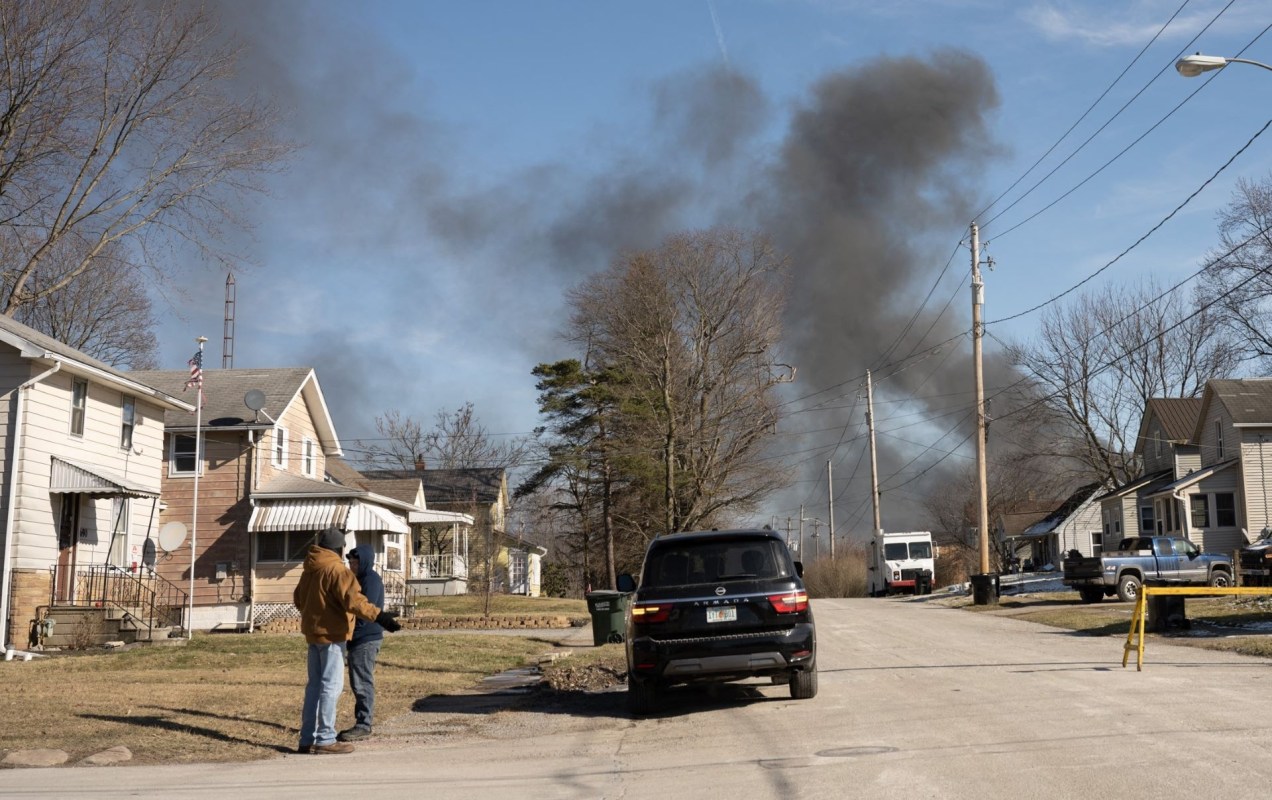A 150-car freight train carrying hazardous materials derailed in early February in East Palestine, Ohio, leading to an evacuation order and a state of emergency.
The Norfolk Southern-operated freight train was carrying chemicals and combustible material from Illinois to Pennsylvania on Feb. 3 when it derailed about 50 miles northwest of Pittsburgh due to a broken axle, the Associated Press reported.
One of the materials the train was carrying was a toxic flammable gas called vinyl chloride, which is used to create polyvinyl chloride (PVC), a hard plastic resin that comprises nearly 12% of the total plastic use worldwide.
The train caught fire after its derailment and authorities carried out a controlled release of the vinyl chloride on Feb. 6 to neutralize the burning cargo and prevent an explosion. The incident resulted in striking images of the train's billowing smoke plumes spreading quickly on social media.
According to the EPA, authorities released the vinyl chloride from five-car tankers into an excavated trench and then burned it off. One report stated this controlled burn would pollute the air with highly poisonous and life-threatening hydrogen chloride and phosgene, the latter of which was used as a weapon in World War I.
Multiple East Palestine residents have reported pets and other animals dropping dead in wake of the incident, including streams full of fish. Though no human injuries have been reported from this accident, many are calling it an environmental disaster as the release of such toxic chemicals raises concerns about air, soil, and water pollution.
"Initially, with most environmental spills, it is difficult to determine the exact amount of material that has been released into the air, water, and soil," James Lee, media relations manager for the EPA in Ohio, wrote in an email to CNN.
On Feb. 8, officials said the area was safe for residents to return to after air quality samples "showed readings at points below safety screening levels for contaminants of concern," NBC News reported.
Still, many remain concerned about going home.
"If you had a very small amount of vinyl chloride that was present in an area, it would evaporate within minutes to hours at the longest," Dana Barr, a professor of environmental health at Emory University, told CNN. "But the problem they're facing here is that it's not just a small amount… I probably would be more concerned about the chemicals in the air over the course of the next month."After continued air monitoring throughout the village, the EPA said it had not detected toxic pollutants at "levels of concern" since extinguishing the fire. As of Feb. 13, no vinyl chloride or hydrogen chloride were detected in the 290 homes screened, though 181 homes are still awaiting screening.
Join our free newsletter for cool news and actionable info that makes it easy to help yourself while helping the planet.









